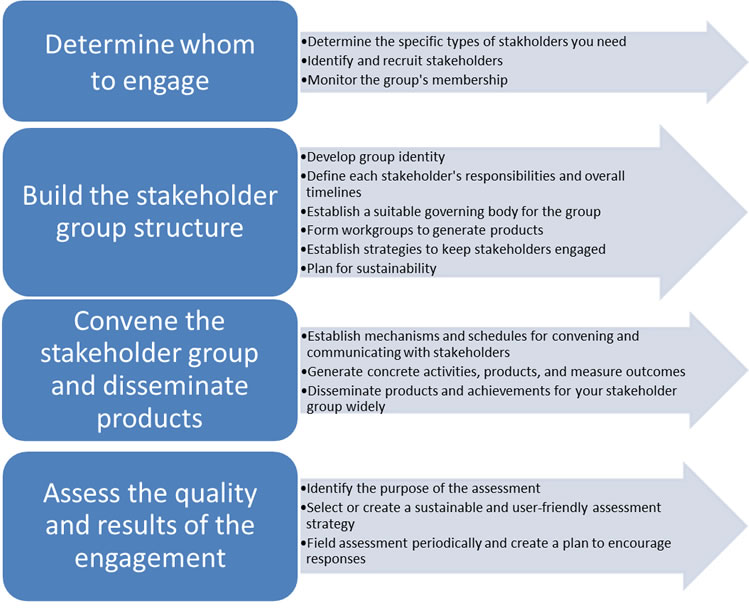Conclusion
Implementation Guide Number 1
Based on the efforts of three CHIPRA quality demonstration States—Massachusetts, Idaho, and Georgia—as well as those of Utah and Vermont, this guide has presented key steps, strategies, and considerations for meaningfully engaging a variety of stakeholders in initiatives to improve the quality of child health care. The key steps and tasks are summarized again in Figure 2. As evidenced from the experiences of these States, stakeholder engagement can take many different forms, and every stakeholder engagement initiative is unique. Depending on the specific QI initiative you are undertaking, you may need to take steps that are not included in this guide, complete the steps and tasks in a different order, or omit certain steps that are presented here.
When designing your process, carefully consider the following:
- Factors specific to your State will shape your stakeholder engagement process, including the political environment, the capacity and structure of the child health care community, priorities for child health care, and gaps in QI for child health care.
- Engaging stakeholders is a continual process, not a one-time event. We hope you will revisit this guide as your stakeholder engagement process evolves over time.
- No single process will satisfy everyone’s stakeholder engagement aspirations. You can, however, set appropriate expectations by:
- Being clear about the group’s goals.
- Selecting stakeholders who will participate thoughtfully.
- Building a structure conducive to achieving your goals.
- Maximizing your potential impact through planned communication and dissemination.
- Continually improving the process by assessing the process and its impact.
Figure 2. Overview of Stakeholder Engagement Steps and Tasks




